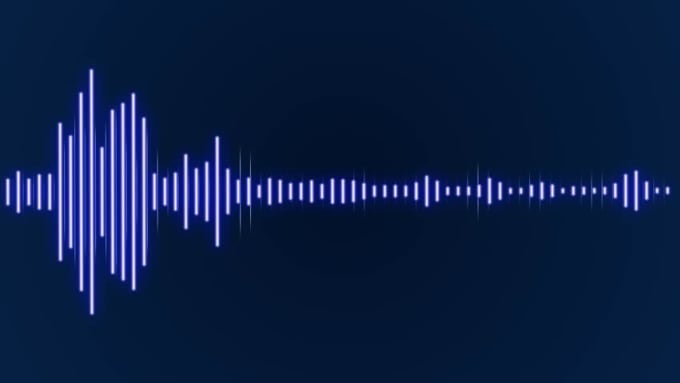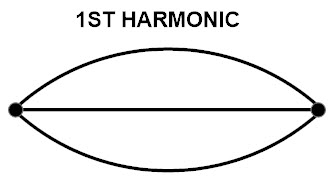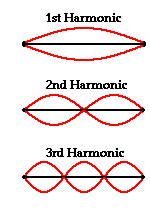Audio Spectrum
Take a look around your surroundings.
Open your eyes and listen for a little while.
You will note that probably there are different types of sounds around you, for example, the sound of:
- songs playing on TV
- air blowing outside
- birds chirping in the distance
- traffic
- the sound of a fan
- and a whole range of other things.
All these types of sounds are composed of different frequencies. Some sounds have no clear pitch; however, some mixtures of sounds have low or high notes. Just like the other sounds constitute different frequencies, different frequencies are audible differently. Graphical or visual representation of these frequency ranges is known as a sound or audio spectrum.
What is the Audio Spectrum
A sound is a form of energy, and the sound frequency is measured in hertz, known as the number of vibrations per second. The loudness of sound, power of the pressure in technical terms is measured in decibel.
When we talk about the audio frequency spectrum, it is known as the range of sound frequencies audible to humans.
If you consider the sound of something, you could even say it's a frequency recipe. Every sound you hear is just a specific combination of various frequencies at various audio levels. Similarly to how green is just a combination of blue and yellow.
Of course, if you're familiar with the music, this won't surprise you since chords are just a denomination for frequencies.
Thus the audio spectrum is defined as the audio frequency range that humans can hear.

Audible Frequency Range-Frequency Bands
The range of sound frequencies is audible or hearable for the human ear or any other animal. Another definition of an audible range is proper pressure deviating from atmospheric pressure because of the sound waves.
Both humans and animals have a different range of audible frequencies. For example, the audible range for humans is 20 to 20000 Hz, although there can be some variations.
Some other examples of the audible range for animals include dog audible range is 67 to 45000Hz, another example is cats have an audible range of 45 to 64000Hz.
Now when we talk about different devices like musical instruments or speakers, these devices have to maintain their frequency ranges between the audible range of the human ear. For this purpose, different spectrums of sounds are combined and adjusted to construct the audible range of frequencies.

What is the Fundamental Frequency?
In simple terms, the fundamental frequency is known as the lowest frequency of a waveform. The lowest frequency that an instrument can produce is called the fundamental frequency. It's also referred to as the first harmonic of the device and can be abbreviated as f1.

As the fundamental frequency is the lowest, ears perceive it as the loudest one. The fundamental frequency is one of the most vital concepts when studying musical instruments and musical properties. It's also essential in many aspects of Engineering.
Let's talk about the calculation of the fundamental frequency. It depends on the type of the vibrating system, for example, if the vibrating system is an electronic circuit, tube, or another mechanism. The fundamental frequency can be created by the vibration of the entire length of the air column or string.
The frequency at which the entire wave undergoes the vibration is known as fundamental. Sinusoidal components that are present at frequencies that are above the whole are known as overtones.
The predominant frequency of any waveform, complex or straightforward, is the fundamental frequency provided the most robust audible pitch reference. As mentioned above, the fundamental frequency is the first harmonic.
The harmonics are the integral multiples of the fundamental frequency. For example, if we say that a fundamental frequency is 50 Hz, also known as the first harmonic, then the second harmonic will be the 50 x 2, which equals 100 Hz, and so on, it continues.

How to Visualize a Sound Recording with an Audio Spectrum analyzer
Visualizing a sound recording with an audio spectrum enhances the creativity of the content, making it more attractive, and with new technology, this is easily possible with a music visualizer.
A music visualizer is a tool that allows visualizing a sound recording with an audio spectrum adding a variety of visuals effects to the sound recording.
Music visualizers are software that generates imaginary effects following the frequency spectrum rhythm of the audio music and the loudness.
As the music plays, a visual representation of the audio spectrum is generated along with other visuals, synchronizing both visual and sound information. Motionbox provides its users with innovative audio spectrum templates that boost your video creativity with amazing effects.
While there are other software available on the market, we do believe that Motionbox has the best offering - however bias that may be.
Motionbox music audio visualizer templates are speedy, customizable, and come with different benefits. It allows you to visualize your content with fantastic background attractive animated texts and will enable us to create such effects that react to the range of the music.
Moreover, it allows unique visualizer effects, the audio waveform of your choice from different options available. Music visualization enhances the quality of your content, making it more attractive for your audience. Using a motion box music visualizer, you can make your content eye-catching for your viewers.
Motionbox music visualizer and audio spectrum software are the best options for content creators like poets, musicians, artists who want to make their content famous and grow their audience online.
With Motionbox music visualizer, all you have to do is select the audio you want to add and then choose your desired background, audio waveform, animated text, and reactions according to your choice among the different options available.
Frequently Asked Questions
Here are some commonly asked questions when it comes to the audio spectrum.
How do you make a circle audio spectrum online?
Circle audio spectrum can easily be made with the Motionbox circular design spectrum templates. You can customize the template according to your needs and desiers.
How do I make an audio spectrum video?
Here's how to easily visualize the audio spectrum.
- Open Motionbox
- Select the desired template you want to customize.
- Select the audio media and drop it to the template.
- Motionbox features allow you to trim the audio according to your desired length.
- Select the background. It can be either a video or static image.
- From the different audio spectrum designs available in the sidebar, choose one according to your choice.
- Boost up your content creation with other creative options available, like adding animated texts, reactions, emojis.
Conclusion
Visualizing the content has been an innovative addition to the world of music. It allows the sync between audio and imaginary effects in a very aesthetic and impressive way.
With the immense growth in the music industry, recent advances in technology have made many artists and musicians realize that their dream of becoming popular musicians is not impossible anymore with little or no resources.
However, now, this has become easily possible for every person who is a musician, artist, or any content creator to give life to their content with different software and apps available in the technology market.
Among many other software companies, Motionbox provides its users with a wide range of excellent features and tools so that anyone, either an online content creator or a producing company, Motionbox reliable services, is the best choice for everyone.
Hey 👋 I am the founder and maker of Motionbox. My mission is to build useful tools in the video space. I enjoy science, art, and sports. Feel free to reach out to me.

